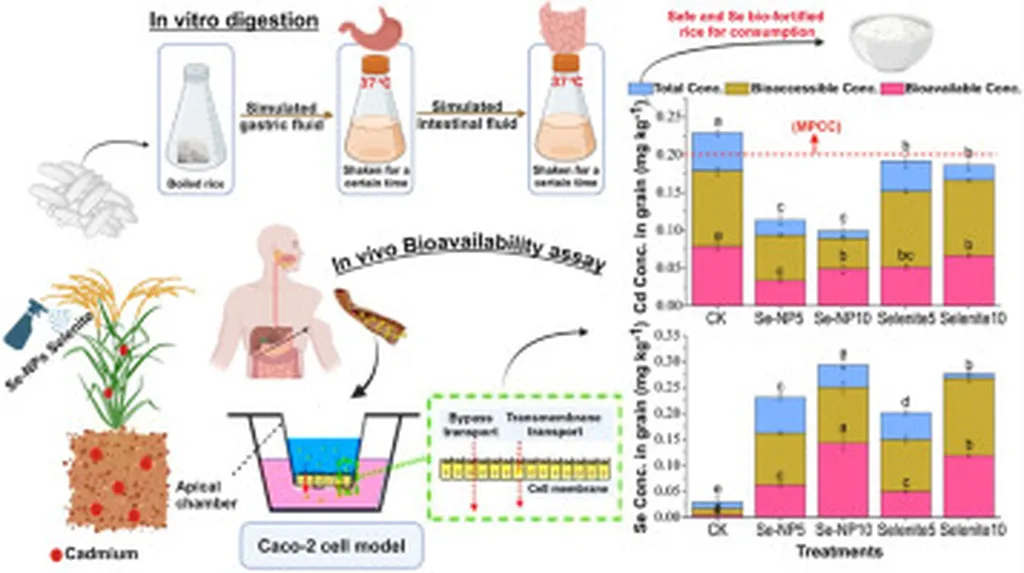In the heart of China’s Zhejiang province, researchers at Zhejiang University are making strides in the fight against cadmium (Cd) contamination, a pervasive issue threatening agricultural productivity and food safety. Led by Munazza Ijaz of the State Key Laboratory of Rice Biology and Breeding, a recent study published in *Cleaner Engineering and Technology* (translated as *Cleaner Production and Sustainable Technology*) has unveiled the potential of biogenic silicon nanoparticles (SiNPs) as a promising solution to mitigate Cd stress in rice plants.
The study, conducted in a controlled greenhouse environment, demonstrated that SiNPs significantly enhanced the growth and health of rice plants under Cd stress. The application of SiNPs increased plant height, fresh and dry weight by 22.98%, 25.18%, and 30.01%, respectively, compared to the control. “The improvements in plant growth were remarkable,” said Ijaz, highlighting the potential of SiNPs as a nanotherapeutic agent.
The research delved into the physiological and biochemical responses of rice plants to SiNPs under Cd stress. SiNPs were found to bolster the plant’s defense system by enhancing the activities of antioxidant enzymes, such as superoxide dismutase, peroxidase, and ascorbate peroxidase. This enzymatic boost helped reduce the accumulation of reactive oxygen species, which are harmful byproducts of Cd stress.
Moreover, SiNPs improved the absorption of essential nutrients and reduced Cd accumulation in rice leaves by 61.04% compared to plants not treated with SiNPs. Gene expression analysis revealed that SiNPs upregulated genes associated with silicon transport, antioxidant activity, and phyto-chelation, further validating their role in Cd detoxification.
The benefits of SiNPs extended beyond the plants themselves. Soil enzyme activities and nutrient cycling also improved upon SiNPs exposure, suggesting a holistic enhancement of the agricultural ecosystem. Leaf ultrastructure analysis further confirmed the protective effects of SiNPs, showing preserved cellular morphology and minimized Cd-induced damage.
The implications of this research are profound for the agricultural sector and beyond. As Ijaz noted, “This study opens up new avenues for developing environmentally friendly and effective strategies to combat heavy metal contamination in crops.” The use of SiNPs could not only enhance food safety but also improve crop yields, addressing food security concerns in regions affected by heavy metal pollution.
The commercial impacts of this research are particularly significant for the energy sector, which often deals with heavy metal contamination in soil and water. The development of SiNPs as a nanotherapeutic agent could provide a sustainable and cost-effective solution for remediating contaminated sites, thereby facilitating the safe and efficient production of bioenergy crops.
As the world grapples with the challenges of climate change and environmental degradation, innovative solutions like SiNPs offer a glimmer of hope. The research conducted by Ijaz and her team at Zhejiang University underscores the importance of interdisciplinary collaboration in addressing global agricultural and environmental issues. With further research and development, SiNPs could become a cornerstone of sustainable agriculture and environmental remediation, shaping the future of food security and energy production.

